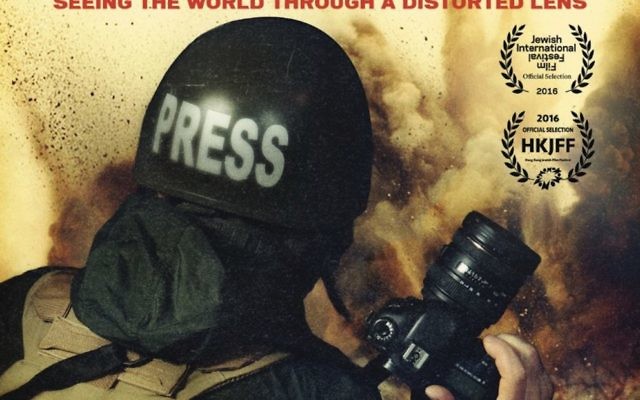Misreporting the Gaza War
Instead of focusing on Hamas, Eyeless in Gaza, which will premier at the Jewish International Film Festival next week, focuses on the media’s role in the conflict between Hamas and Israel.
WE’VE become accustomed to hearing about the terrible atrocities committed by Hamas.
The terror group uses women and children as human shields, hides rockets in United Nations schools, fires rockets from residential areas, murders and drags gay people through the streets of Gaza, and praises suicide bombers and those killed in the act of committing terrorist attacks.
But instead of focusing on Hamas, Eyeless in Gaza, which will premier at the Jewish International Film Festival next week, focuses on the media’s role in the conflict between Hamas and Israel.
During the documentary, former Associated Press (AP) reporter Matti Friedman reveals that at one point during the war staff witnessed a rocket launch outside their office but were pressured into covering it up.
“Armed Hamas men burst into the AP bureau and threatened staff over a photograph that an AP staffer had taken,” Friedman said.
“Not only does Hamas know that it can successfully intimidate reporters into what Hamas wants; it knows they will not report their own -intimidation.”
Another reporter, RTV’s Harry Fear, was expelled from Gaza when he tweeted that rockets were fired from “a well-known site in West Gaza City near my hotel”.
Fear says journalists know the truth, but don’t have the freedom to always report it.
“I don’t think there is any correspondent who covered that conflict who didn’t see war crimes committed by Palestinian militant groups,” Fear said.
The documentary also shows a France 24 reporter standing outside a UN shelter for a live broadcast.
While on air, a Palestinian militant fires a rocket towards Israel from the site.
However, instead of drawing a connection between the missile being launched and the subsequent retaliatory strike by Israel, the reporter states only that “those who have found refuge in the UN emergency shelters have been targeted by Israeli strikes”.
The combination of interviews with journalists, Palestinian citizens and Hamas officials portrays the truth about how Hamas intimidates and exploits the media.
It shows how many reporters failed to cover the conflict in a fair and impartial manner because any negative comments or stories about Hamas could lead to immediate expulsion from Gaza.
Instead, they succumb to intimidation and stand-over tactics, simply becoming tools of the Hamas propaganda machine.
Info:
UIA hosts a screening of Eyeless in Gaza on Sunday, November 13 at the Classic Cinema at 6.30pm, followed by a Q&A with executive producer Robert Magid. For more information and to book tickets, visit www.trybooking.com/231969.
Eyeless in Gaza screens at JIFF on Monday, November 14 at the Classic Cinema at 6.45pm, followed by a Q&A with executive producer Robert Magid. For more information and to book tickets, visit www.jiff.com.au.
JOSHUA LEVI


comments